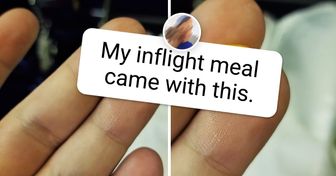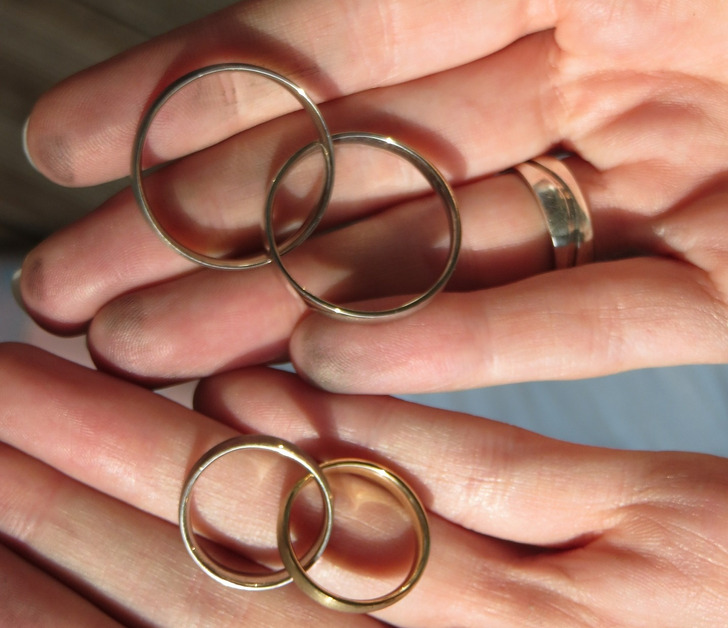Thank you very much
10 Ways to Spot a Real Gemstone on Your Own

There is a saying that goes, “All that glitters is not gold.” Unfortunately, it’s applicable to other precious metals and stones too. We often get confused by the captivating, shiny, pure color of jewelry and could mistake a fake for the real thing.
At Bright Side, we learned simple methods that can help you tell whether it’s a real gemstone or precious metal, if you’re planning to buy without professional expertise.
A real ruby has a vivid “stoplight” redness.
Real rubies have a vivid “stoplight” redness. If the stone has hints of orange or other earthy tones, it’s likely a garnet.
Real gemstones have impurities and tiny cracks.
Very few real gemstones are perfect. If you look closely, you may see tiny cracks and impurities that can’t be found in a fake stone. Lab-created gemstones can also have flaws but they have a certain pattern.
You can tell the metal by the sound it makes.
Each metal emits unique vibrations when colliding with other metals. To make sure you have a true piece of gold, compare its sound with one you can find on YouTube.
Real gemstones change their color under different lighting.
Some gemstones can change their color depending on the color and temperature of the light source. Real alexandrite usually looks green in the daylight and red under artificial light.
A real tourmaline is pink, but it displays a brownish undertone when under artificial light.
But if a sapphire changes its hue from blue to purple when the light changes, it’s probably synthetic. Corundum’s chameleons (color-changing sapphires) are very rare, and they are usually represented by lab-created stones on the market.
You can’t scratch a real diamond.
A diamond is the hardest mineral known to mankind. Therefore, it can’t be damaged by anything except another diamond. Take the risk of rubbing a diamond with sandpaper: if it’s real, there will be no traces left afterward.
Other gemstones, although less hard, are still superior to glass in this respect. Gently run the stone along the edge of the glass showcase: if there is a scratch on it, then the stone is genuine.
Diamonds have an interesting optical effect.
A real diamond refracts light really well. If you put the stone with the flat side down on a dot drawn on a piece paper and look at it through the stone’s pointed end, you won’t see anything.
A real sapphire doesn’t have bubbles inside.
Real gemstones are cold.

Real gemstones have low thermal conductivity. You can tell glass from quartz, or brown topaz from cheap citrine, if you touch it with your lips and feel that it’s cold.
Fake gold won’t pass the makeup test.

Real pure gold should be homogeneous. No matter how skilled a jeweler is, they can only gild the surface of a fake jewelry. This means that irregularities will be noticeable at the joints and in places with the slightest damage.
Another way to identify real gold is to rub it against your skin where you have applied foundation. If it leaves a black mark behind then the gold is pure.
Check drill holes in pearls.
The drill holes through which the thread passes will help you check the authenticity of a pearl necklace. In plastic fakes, you can see flakes or chipped coating around the drill holes that will peel off over time.
Do you usually check the authenticity of gold and gemstones before buying them? How do you do it? Tell us in the comments below.
Comments
most, likely fake looks better like the ruby xD
Related Reads
15 Travelers Showed the Cool Things They Found in Airports and Airplanes

15 Designs That Are Both Practical and Outside the Box

9 Double Standards Women Often Face

15 Pics That Seem Like They Were Taken in Another Universe

16 Shots That Are So Perfectly Timed, They Deserve an Award

I Refuse to Let My Dad’s New Wife Erase My Late Mom’s Memory, She’s Gone Too Far

I Refuse to Be Treated Like the Family Nanny—And My Mom Chose Her Boyfriend Over Me

I Was Excluded From a “Family” Dinner—My Revenge Taught My DIL a Lesson

I Helped a Friend Have a Child — Now He Wants a Relationship I Never Agreed To

I Discovered My Firm Was Secretly Hiring for My Position—HR’s Response Shocked Me

I’m Childfree and I Left My Legacy to My Niece, Now My Stepdaughter Is Livid

My Boss Tried to Ruin My Christmas Plans—I Got the Last Laugh








